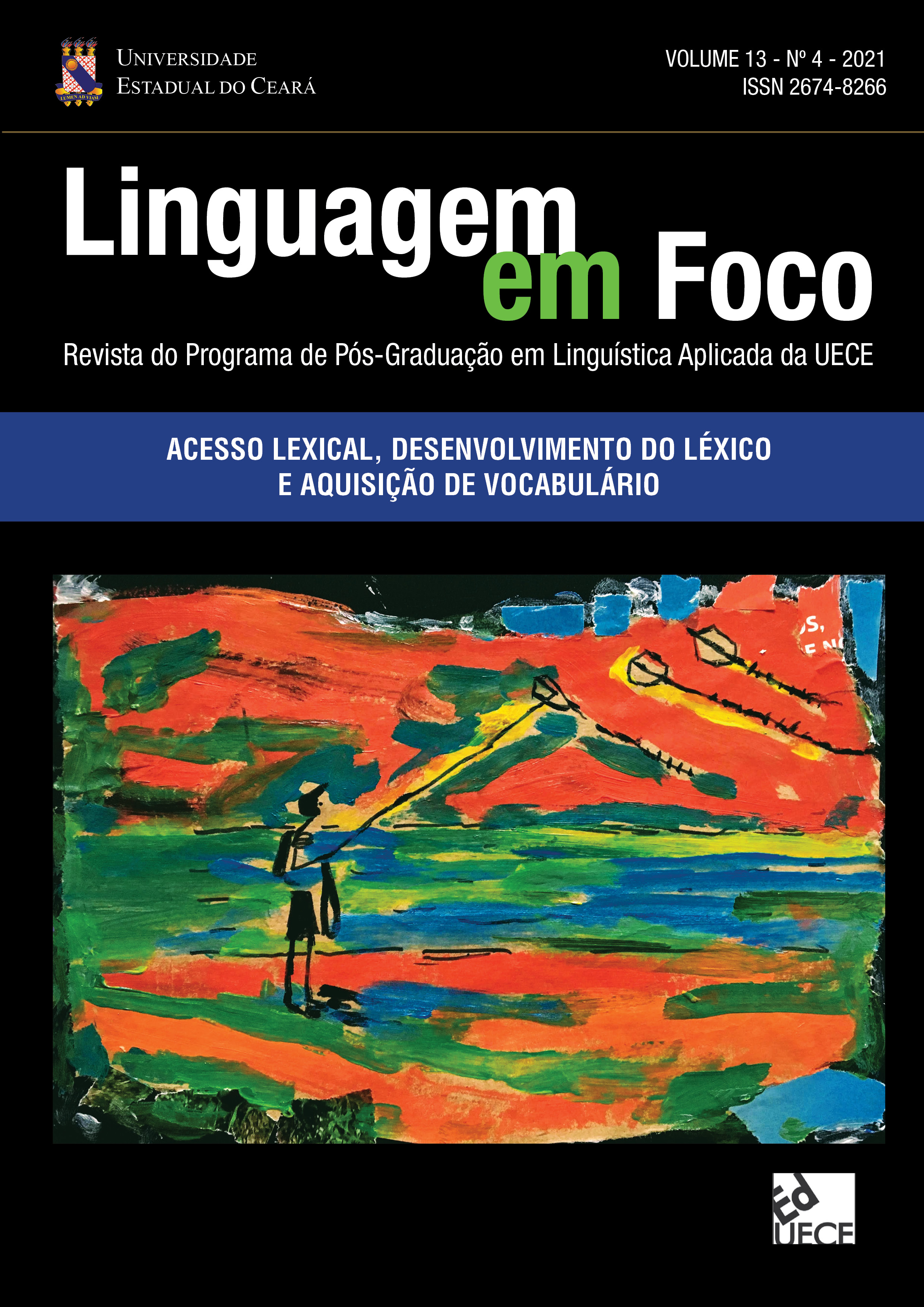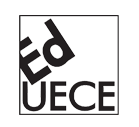Deviant lexical forms by learners of L2 Portuguese
DOI:
https://doi.org/10.46230/2674-8266-13-7438Keywords:
L2 lexical deviant forms, Linguistic transfer, Constructive MorphologyAbstract
This article describes a qualitative study which investigated two types of deviant lexical forms identified in 23 written productions of Italian speakers, learners of L2 Portuguese in an immersion setting, divided into two groups of proficiency. The main goal was to identify a possible relationship between learner’s proficiency level and the typology of lexical forms – i.e., deviant forms due to borrowing or deviant forms due to creation of neologisms. It was expected that (i) the less proficient learners would create more deviant forms due to borrowings, considered their more limited knowledge of the L2, while (ii) the more proficient ones would present more deviant forms due to neologism, as their L2 knowledge was more substantial. None of the expected results, however, was confirmed by data analysis, which was carried out within the theoretical background of Constructive Morphology (BOOIJ, 2005, 2010, 2015). Explanations for the study findings are offered, based on research findings.
Downloads
References
BOOIJ, G. Construction Morphology. In: HIPPISLEY, A.; STUMP, G. (Org.) The Cambridge Handbook of Morphology. Cambridge: Cambridge University Press, 2015, Cap 16, p. 424-448.
BOOIJ, G. The Grammar of Words – an introduction to linguistic morphology. Oxford: Oxford University Press, 2005.
CENOZ, J. The effect of linguistic distance, L2 status and age on cross-linguistic influence in third language acquisition. In: CENOZ, J.; HUFEISEN, B.; JESSNER, U. (Org.) Cross-linguistic Influence in Third Language Acquisition: Psycholinguistic Perspectives. Clevedon: Multilingual Matters, 2001.
ESTRELA, A.; ANTUNES, S. A sufixação num corpus de aquisição de PLE/L2. Pelos Mares da Língua Portuguesa, v. 3, 2017, p. 905-924.
GARCIA-LECUMBERRI, M. L.; GALLARDO, F. English FL sounds in school learners of different ages. In: GARCIA -MAYO, M. P.; GARCIA-LECUMBERRI, M. L. (Org.) Age and the acquisition of English as a foreign language. Clevedon: England: Multilingual Matters, 2003, p. 115-135.
GASS, S. M.; SELINKER, L. Second Language Acquisition – an introductory course. 3 ed. New York: Routledge, 2008.
GOLDBERG, A. E. Constructions – a construction grammar approach to argument structure. Chicago: The University of Chicago Press, 1995.
HERWIG, A. Plurilingual lexical organization: Evidence from lexical processing in
L1-L2-L3-L4 translation. In: CENOZ, J.; HUFEISEN, B.; JESSNER, U. (Org.) Cross-linguistic Influence in Third Language Acquisition: Psycholinguistic Perspectives. Clevedon: Multilingual Matters, 2001.
JARVIS, S.; ODLIN, T. Morphological type, spatial reference and language transfer. SSLA, v. 22, 2000, p. 535-556.
KELLERMAN, E. Toward a characterization of the strategy of transfer in second language learning. Interlanguage Studies Bulletin, v. 2, 1997, p.58-145.
LLACH, M. P. A. An overview of variables affecting lexical transfer in writing: a review study. International Journal of Linguistics, vol. 2, n. 1, 2010, p. 1-17.
LEIRIA, I. Léxico, aquisição e ensino do português Europeu Língua Europeu Língua não Materna. Aveiro: Fundação Calouste Gulbenkian, 2006. Disponível em: https://aeaveiro.pt/biblioteca/index.php?page=13&id=4779&db=. Acesso em: 25 mar 2021.
LO LUCA, M, G. Italiano: la formazione delle parole. Roma: Carocci Editore, 2020.
NAVES, T., MIRALPEIX, I.; CELAYA, M.L. Who Transfer More ... and What? Cross-linguistic Influence in Relation to School Grade and Language Dominance in EFL. International Journal of Multilingualism, vol. 2, n. 2, 2005, p.113-134.
NETO, N. A. S. Morfologia Construcional e alguns desafios para a análise de dados histórico da língua portuguesa. Domínios da Lingu@gem , v. 11, n. 3, Uberlândia, 2017, p. 468-501. Disponível em: http://periodicos.uefs.br/index.php/acordasletras/article/view/5904. Acesso em: 16 fev. 2021.
OLSEN, S. Errors and compensatory strategies: a study of grammar and vocabulary in texts written by Norwegian learners of English. System, v. 27, 1999, p.191-205.
POULISSE, N. A Theoretical Account of Lexical Communication Strategies. In: Schreuder, R.; Weltens, B. (Org.) The Bilingual Lexicon. Amsterdam/Philadelphia: John Benjamins, 1993, p. 157-189.
RINGBOM, H. Cross-linguistic similarity in foreign language learning. Clevedon: Multilingual Matters, 2007.
RIO-TORTO, G.; RODRIGUES, A. S.; PEREIRA, I.; PEREIRA, R.; RIBEIRO, S. Gramática Derivacional do Português. Coimbra: Universidade de Coimbra, 2013.
RIO-TORTO, G. Flexão e derivação: simetrias e assimetrias. Revista Portuguesa de Filologia, vol. XXIV, 2002, p. 253-289.
SELINKER, L. Interlanguage. International Review of Applied Linguistics, v. 10, 1972, p.209-231.
SINGLETON, D.; O’LAOIRE, M. The role of prior knowledge in L3 learning and use – further evidence of the psychotypological dimensions. In: ARONIN, P.; HUFEISEIN, B. The Exploration of Multilingualism – Development of Research in L3, multilingualism and multiple language acquisition. Amsterdã/Filadélfia: Johns Benjamin, 2009, p. 79-102.
Published
How to Cite
Issue
Section
License
Copyright (c) 2022 Alessandra Baldo

This work is licensed under a Creative Commons Attribution 4.0 International License.
Authors who publish in Linguagem em Foco Scientific Journal agree to the following terms:
- Authors retain the copyright and grant the journal the right of first publication. The articles are simultaneously licensed under the Creative Commons Attribution License which allows sharing the work with an acknowledgement of its authorship and initial publication in this journal.
- The concepts issued in signed articles are the absolute and exclusive responsibility of their authors. Therefore, we request a Statement of Copyright, which must be submitted with the manuscript as a Supplementary Document.
- Authors are authorized to make the version of the text published in Linguagem em Foco Scientific Journal available in institutional repositories or other academic work distribution platforms (ex. ResearchGate, Academia.edu).





























